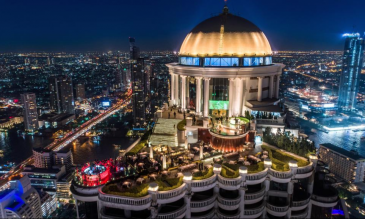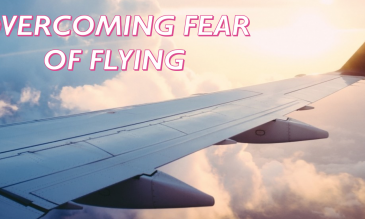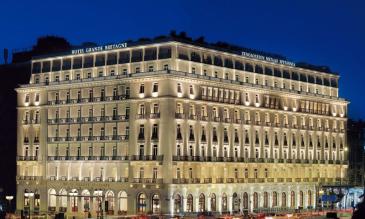Always strive not to allow any official rules or procedures related to air travel or airport security distance you away from your dream holiday. Remember that, in spite of their rigid and deterrent nature, their only purpose is to assist you in having the most worry free vacation. Sometimes, travellers consider that going through the airport security line is a mere waste of time and nerves. And, indeed, it may be if you have to browse among a myriad of guides, each referring to a countless number of issues which may or may not address their particular situation. Therefore, we managed to compile a set of guidelines that will simplify your voyage and will help you enjoy your vacation to the fullest.
Our BASIC GUIDE to airline baggage allowance and airport security regulations is intended to help you prepare for your travel without worrying that you unconsciously break any rules related to airport security regulations. Bear in mind that different areas of the world have adopted their specific security measures. Therefore, it is a very good idea to check the most updated information when checking your luggage.
Do you know what and how much you can take with you when travelling?
It is an excellent idea to be familiar with the 3-1-1 rule for Airline Carry-On Baggage established by Travel Security Administration (TSA). This rule states that liquids, aerosols and gels, are not hazardous to carry aboard an airplane if they are in limited quantities. The TSA set up a limit of one bag per traveller which, by all means, limits the total quantity each holidaymaker can bring aboard and aircraft. Furthermore, the mere fact that the bottles are all in one bag, enables the security officers to quicken the checking process as anytime that TSA investigates a carry-on, the line is basically slowed down. Thus, if you remember to pack in accordance with the 3-1-1 rule, you will guarantee a quicker and easier CHECKPOINT EXPERIENCE.
The 3-1-1 formula for the carry-ons would translate into a 3.4 ounce (100ml) bottle or less (by volume); 1 quart-sized, clear, plastic, zip-top bag; 1 bag per passenger placed in screening bin. The fact that each passenger may only bring aboard one-quart bag limits the total liquid volume. Consequently, the 3.4 ounce (100ml) container size is a simple security measure. On the other hand, the 3-1-1 is for short trips.
In case you need to have larger liquids aboard such as MEDICATIONS, BABY FORMULA or FOOD, and breast milk, you have to declare them to the airport security officer so that they are inspected at the checkpoint. Such liquids are allowed in reasonable quantities exceeding three ounces and it is not compulsory to carry them in zip-top bag. You should also be aware that officers may need to unwrap these items in order to perform further screening.
A similar rule also applies to European countries or to UEA. Liquids that are carried aboard the plane such as drinks, cosmetic creams, toothpaste or gels ought to be carried in a transparent plastic bag – maximum capacity 1 liter – and no container may hold more than 100 ml. The liquid containers that are larger than 100 ml should be placed in the checked baggage. You have to place them in a transparent re-sealable plastic bag that has a maximum capacity not exceeding one (1) liter. You will not be allowed with larger bags or non-sealable bags. For example, you will not be permitted to come aboard a plane with a fold-over sandwich bag. This volume restriction does not apply to medicines or baby food. The UEA also adds to this list of exceptions, special dietary requirements.
Nevertheless, we would like to point out that if, for example, you are only transiting or connecting through Bangkok/Singapore/Kuala Lumpur (BKK/SIN/KUL) and you need to step off the plane and then re-board to continue, these airports currently have strict LAGs regulations that allow them to remove liquids throughout transit.

All in all, you are allowed to carry liquids, aerosols and gels (LAGs) IN LIMITED QUANTITIES and only if these are packed in Security Tamper-evident Bags (STEBs).
Always be sure that you do not bring prohibited items aboard the plane
You are not allowed to take with you in the aircraft cabin ANY SHARP OBJECTS that may be used as weapons. In fact, no weapon of any type is allowed aboard. Common objects that you use on a daily basis such as corkscrews, box cutters, knives with blades of more than 6 cm, razor blades or scissors with blades of more than 6 cm as measured from the fulcrum, must be packed in your hold luggage. Moreover, explosives and flammable substances and devices such as fireworks or aerosol spray paint for example, chemicals and toxic substances, such as acids – are forbidden on flights. Also, blunt objects that may cause serious injury when used to hit such as baseball and softball bats, billy clubs, blackjacks or night sticks should also be excluded from your cabin baggage. No weapons of any type are allowed aboard the aircraft.
In so far as lithium batteries (used in digital cameras, cell phones, PDAs and laptops) are concerned, you should be aware that these batteries need to be installed in the electronic device. You are allowed to carry 8 grams (100-watt hours) of lithium batteries in your cabin baggage but keep in mid that they have to be correctly protected in their original wrapping or in a protective holder.
Make your holiday exceptional by packing intelligent and spending the least amount of time in airport security lines
It is true that different airline agencies have different airline security regulations. The golden rule is to pack you baggage as light as possible. Most of the airlines allow a carry on baggage of 45 linear inches. British Airways, for example, allows 23Kg (56x45x25cm +Laptop or handbag 45x36x20cm including handles and pockets that must be placed under seat . Emirates, on the other hand, has one of the world’s most generous baggage policies. Economy Class customers can check in 30kg, Business Class travellers 40kg and if you are flying First Class you can travel with 50kg of checked baggage. These weights do not apply to itineraries involving North or South America.
Whether the luggage is checked or carry on, the best solution is to organize it so that it is as easily seen through or detected as possible.

 En
En Es
Es Fr
Fr











